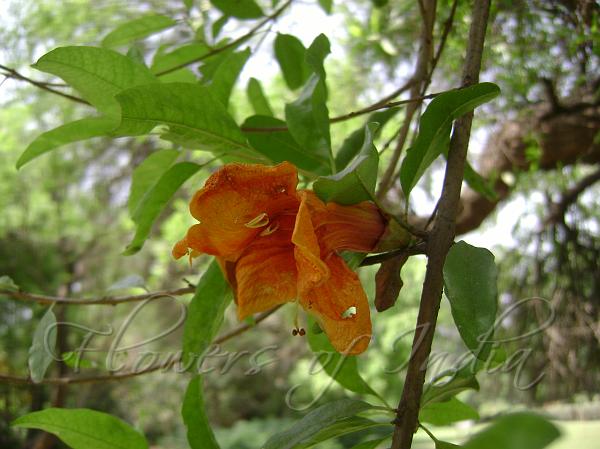|
| Roheda |
|

|

| File size | 1256093 |
| Original date | 4/15/09 11:04 PM |
| Resolution | 2048 x 1536 |
| Flash | Flash did not fire, auto |
| Focal length | 5.8mm |
| Exposure time | 1/320s |
| Aperture | 2.8 |
| Focus Distance | |
| Metering Mode | Spot |
| Camera make | SONY |
| Camera model | DSC-S650 |
| Sensor type |
|
|
|
|
Photo: |
Botanical name: Tecomella undulata Family: Bignoniaceae (Jacaranda family)
Synonyms: Tecoma undulata, Bignonia undulata
Synonyms: Tecoma undulata, Bignonia undulata
Roheda is a deciduous or nearly evergreen tree of desert or dry regions.
It occurs on flat and undulating areas including gentle hill slopes and
sometimes also in ravines. It thrives very well on stabilized sand dunes,
which experience extreme low and high temperatures. Leaves are narrow,
somewhat lance-shaped, with wavy margins, 5-12 cm long. In spring time it
produces beautiful showy tubular flowers in yellow, orange and red colours. Fruit is a long, thin, slightly curved capsule up to 20 cm long,
with winged seeds. Roheda is mainly used as a source of timber. Its wood
is strong, tough and durable. It takes a fine finish. The wood is
excellent for firewood and charcoal. Cattle and goats
eat leaves of the tree. Camels, goats and sheep consume flowers and pods.
Roheda plays an important role in ecology. It acts as a soil-binding tree
by spreading a network of lateral roots on the top surface of the soil. It
acts as a windbreak and helps in stabilizing shifting sand dunes. It is
considered as the home of birds and provides shelter for other desert
wildlife. Shade of tree crown is shelter for the cattle, goats and sheep
during summer days.
Medicinal uses: The bark obtained from the stem is used as a
remedy for syphilis. It is also used in curing urinary disorders,
enlargement of spleen, gonorrhoea, leucoderma and liver diseases. Seeds
are used against abscess.
The bark obtained from the stem is used as a
remedy for syphilis. It is also used in curing urinary disorders,
enlargement of spleen, gonorrhoea, leucoderma and liver diseases. Seeds
are used against abscess.
Medicinal uses:
 The bark obtained from the stem is used as a
remedy for syphilis. It is also used in curing urinary disorders,
enlargement of spleen, gonorrhoea, leucoderma and liver diseases. Seeds
are used against abscess.
The bark obtained from the stem is used as a
remedy for syphilis. It is also used in curing urinary disorders,
enlargement of spleen, gonorrhoea, leucoderma and liver diseases. Seeds
are used against abscess. | Identification credit: Tabish | Photographed in Lodhi Garden, Delhi & Rajasthan. |
| Identification credit: Tabish |